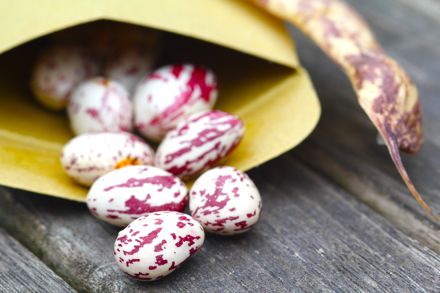Seed exchanges are events where local seeds are shared within the community. They act as great opportunities for education, community building and encouraging biodiversity. But actually hosting a seed exchange is another matter altogether. Like any event, it takes some advance planning, dedication and motivated activists. This guide will cover:
Why host
What seeds to exchange
Basic organizing
Why host
Seeds are the basic building blocks in agriculture. The kind of seeds used determines what variety of food will grow. Industrial farming has pushed certain seeds that yield very specific kinds of food that are easy to grow en masse in specific conditions. Fewer and fewer varieties of food are being used because of this. Communities are losing out on unique local crops just because farmers are pressured to only grow the industry standard. Growing local strands of vegetables and fruits also helps create a more sustainable community.
With genetically modified foods being grown more and more by corporate farmers, activists and environmentalists are pushing back with local farmers to support fresh, nutritious, local foods. Food sovereignty begins with seeds.
Most seed companies buy their seeds from huge corporations and simply resell them. Their product is often mixed with other kinds of seeds. They are constantly dropping unique varieties and heirloom seeds from their catalogues.
What seeds to swap
There are a few guides out there about how to start saving seeds. The Organic Seed Saver’s Alliance put out this 30 page seed saving guide for gardeners and farmers. It covers how to plant the best varieties as well as processing and storing seeds. Seed Ambassadors has also created an easy to understand zine about what kind of seeds are best for beginners to start saving. It includes how to sort through the jargon, tips on storing seeds and details about starter crops.
Reach out to seed collectors. The more unique their seeds, the more interesting the swap will be. Try to find heirloom seeds, discontinued varieties or locally grown crops that have adapted. Provide envelopes and markers for seeds and make sure seeds are clearly labelled.
Basic organizing
Try to figure out how many people will attend and what other events might be going on at the same time. A seed exchange is the perfect time to screen documentaries about food sustainability, run workshops about urban gardening and engage the community in other food sovereignty issues.
Think about these possibilities when looking for a space. Any community centre, rec hall or other large area will do. Try to get the space for free or as cheap as possible, as it is a free event that is put on by the community for the direct benefit of the community.
Encourage folks who might not typical save seeds to think about a swap. Seed saving typically starts in the late summer, so get the word out. The best times to hold a swap is in the fall around October or November when people have had a chance to gather their seeds or around February or March when they are thinking about planting them. Because people need time to prepare and save seeds, make sure to publicize the exchange in advance.



